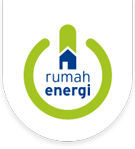In a dark and steamy room in Indonesia’s tofu heartland three men sweat over bubbling cauldrons, churning creamy beancurd with wooden paddles before draining it by hand and slicing it into silky cubes.
Tofu has been cooked this way for generations, but today, innovative villagers on Java Island are producing something extra from the simple soybean — cheap, renewable energy, piped directly into their homes.
About 150 small tofu businesses in Kalisari Village, many run from the family home, are benefiting from a pioneering green scheme that converts wastewater from their production floors into clean-burning biogas.
Where families once relied on sporadic deliveries of tanked gas or wood for stoves, tofu producers like Waroh — who like many Indonesians go by one name, can access this cleaner fuel anytime with the flick of a switch.

“The advantages are huge, because we produce the gas with waste,” Waroh said, as he boiled tea over a steady blue flame coming from his kitchen stove.
Experts say harnessing power from unconventional sources like tofu holds enormous potential in Indonesia, a vast energy-hungry nation heavily reliant on fossil fuels.
Renewable energy accounts for just a fraction of the power generated across Indonesia, a sprawling archipelago of more than 17,000 islands with about 250 million people.
However, the government has committed to curbing Indonesia’s greenhouse gases — it is one of the world’s top emitters — and wants a quarter of the country’s energy to be derived from renewables by 2025.
PIG WASTE
Small-scale projects alone will not meet this target, but they are
making a contribution. While most renewable energy projects use
traditional sources of power such as solar or wind, the Kalisari
initiative is among a handful taking a more original approach. Other
projects include generating energy from sorghum production, and also
from pig waste.
In Kalisari, villagers sometimes wait weeks for liquid petroleum gas (LPG) tanks to arrive. Delays due to poor logistics and bad roads are common in the nation, especially on overcrowded Java.
“One month you had it, another one you did not. Thanks to this biogas, things are a lot easier for people here,” Waroh said, as he ground soybeans through an ancient, spluttering machine.
An enormous amount of water is required to make tofu — about 33 liters for every kilogram of spongy beancurd. Sour-smelling acetic acid is added to make the tofu clump together and when drained, it is this liquid wastewater that is treated with bacteria in tanks to produce biogas.
The gas is piped directly to household stoves, which have been modified to handle the renewable fuel. Long term, the local government hopes the gas will power lights across the village.
It also cuts costs — it is three times cheaper for villagers to pay for unlimited biogas than to purchase refillable LPG tanks.
The government’s technology agency, which spearheaded the Kalisari pilot project, predicted that if rolled out across the country, more than 56,000 tonnes of fossil fuels could be substituted every year by biogas created from tofu waste water.
The optimism is shared by Dutch development organization Hivos, which has set up about 20,000 “digesters” across Indonesia that convert waste products like animal manure into biogas.
“There are thousands and thousands of tofu producers throughout the country. There’s a lot of potential there,” Hivos program development manager Robert de Groot said.
CLEANER WATERS

The Kalisari project has also helped reduce damage caused to the local environment from tofu production.
Thousands of liters of wastewater drained from raw tofu was once pumped daily from factories around the village into nearby rivers, befouling waterways and contaminating rice fields downstream.
“The environment here was very polluted,” Kalisari local government head Aziz Masruri said, gesturing to a river fringed by wooden tofu workshops.
“It stank, and it was affecting our agriculture,” he said.
Things have steadily improved since the cloudy, foul-smelling liquid was diverted from rivers to large blue tanks, where it is transformed into biogas.
Farmers have reported better rice yields, while the river is clearer and less smelly, Masruri said.
As the benefits materialized, the project rapidly expanded. What started as one digester in Kalisari expanded to five, with later models boasting far greater capacity and producing enough gas to power nearly 100 homes.
This innovation has not gone unnoticed. The small village hosts a steady stream of officials from nearby regions keen to imitate the model, and similar projects have already sprung up, Masruri said.
Researchers are also considering other applications for the technology, including Indonesia’s tapioca sector.
Kalisari’s experiment with green energy has been so successful the scheme is operating at maximum capacity. Villagers wanting to sign up must wait for a new digester to be installed, something Masruri hopes will transform Kalisari into a 100 percent “green village.”
“We hope next year we can become an energy efficient village, free of pollution” Masruri said.
Sumber: taipeitimes.com

